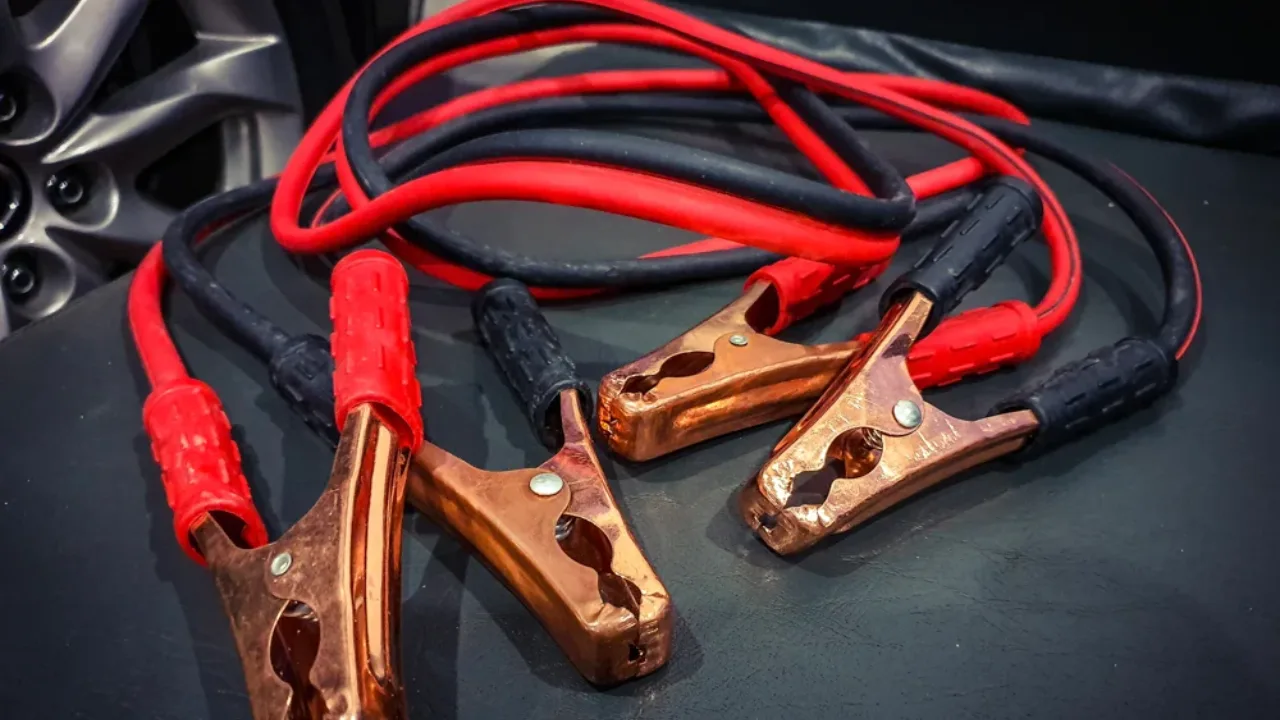My jumper cables are several years old, but I store them in my car in case I need a battery jump. Do they really expire?
Can Jumper Cables Go Bad?
Yes, jumper cables can go bad over time. Because they are made of metal, they are subject to corrosion as time goes on. Rusted or frayed jumper cables cannot transfer electricity effectively enough to jump start a vehicle.
Storing them in a dry place can extend their longevity, but it’s still best to replace them every three years regardless of use.
Here are a few indicators that might help you gauge whether your jumper cables are wearing out.
- Exposure of any metal wire
- Near the clamps, wires are fraying
- The clamps are rusted or corroded
Regular inspections are critical for ensuring proper functionality of the jumper cables. Inspections should look for signs of damage, corrosion, or other issues that may include broken, frayed, or corroded wires. If issues arise, replacing the jumper cables is the best option, as they need to be reliable if the car requires a charge.
It is equally advisable to store the cables in a safe, dry location when not in use. Because water and other abrasives can damage the cables, protection against moisture is warranted, therefore placing the cables in a vehicle trunk or garage is beneficial.re quickly, so it’s best to keep them in a dry place such as the trunk of your car or a garage.

How Do You Know If Jumper Cables Are Bad?
There are numerous indicators, such as the physical condition of the spiral wire, that can point to the cables being in substandard condition.
- The feel of the cables being too hot is an indicator that replacements need to be made.
- One of the metal clamps attached to the cable has burned and is fused onto itself.
- The cable smells like burning, along with a chemical fragrance associated with certain plastics.
- The insulating material appears to have been damaged, exposing the copper wire underneath.
- Untwisting of the outer covering of the wire.
- Rubbing the wire against a rough surface is likely to cause sparks.
So, if you have noticed any of these signs, I suggest bringing your jumper cables down to the next nearest auto parts shop to have them tested. If the diagnostics confirm they are indeed faulty, I recommend purchasing a new set of jumper cables.
Are your jumper cables still OK?
Jump-starting cars seems to be a pretty popular pastime, but we have heard numerous stories about people attempting and failing to begin their cars, or attempting to assist other vehicles on the road, and it just not working. It’s pretty clear that the most common reason why it may have failed is if the cables are damaged.
The reality is that too many of the automobile accessories available in stores are low quality. Add to that the fact that the cables are frequently stored in damp locations, and they simply deteriorate over time.
Here are the most practical primary steps of evaluating the condition of your jumper cables:
- Check for any signs of corrosion. If your cables have been in contact with water, chances are they are not good anymore. Look for any signs of corrosion, water damage, changes in color, etc.
- Look carefully at the cable insulation. Use your fingers to feel the cable carefully and see if there are some uneven spots, damaged insulation, or broken parts of the cable. This will mean the jumper cable is bad.
- Look for any signs of fire damage. The melting and burning of wires may occur when cables are wrongly attached to opposite terminals or experience high overload. If there are any signs of burning on the cables, get rid of them.
- Take a multimeter and check the cables. Testing using a multimeter guarantees precision but you will need a multimeter which can be procured at any tool shop. A broken cable won’t have any resistance between its ends.
Unfortunately, the use of the cables will not indicate any unique signs of either working or not working. Perhaps the only indication is some sparks one gets when the cable is applied to one of the terminals. Still, such evidence does not have to exist.
Hence, if your cables are faulty, then you risk wasting precious time anticipating that the vehicle’s battery is fully charged and ready to ignite the engine.
Therefore, it is critical to ensure that the jumper cables which are presupposed to be in the vehicle are functioning properly. The entire system will fail to operate if any one of the components is defective.